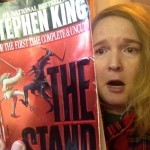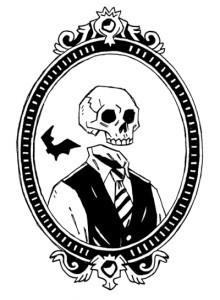G.G. Andrew's Blog, page 17
October 7, 2014
Top Ten Reasons Romance Writers Should Pen Horror
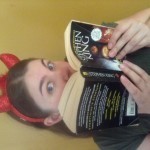 Though I’m mainly a romance writer, I’m writing a horror story this fall. I’ve long been drawn to ghosts and gothics, and it’s been a great experience. Here are ten reasons why all romance writers should try writing in a genre like horror occasionally.
Though I’m mainly a romance writer, I’m writing a horror story this fall. I’ve long been drawn to ghosts and gothics, and it’s been a great experience. Here are ten reasons why all romance writers should try writing in a genre like horror occasionally.
(Of course this all comes with the caveat that seasoned horror authors may take a hatchet to some of these points. Go ahead; I’m waiting for you.)
1. You’ll write outside your comfort zone and learn in the process. Writing romance is like your preferred form of exercise: if you’re a runner, you get better by more jogging, but it can be helpful if you also lift weights and stretch to round out your fitness. So write in your genre(s), but try something new to stretch your mental muscles. Think of it as cross training.
2. But it’s still about the seduction. In romance, you don’t usually have the main characters have sex on page two. You build to it, having the characters glance at each other, maybe brush against each other in an elevator or exchange witty repartee. Likewise, in my horror story, I am trying to slowly build fear, creating a creepy atmosphere and tension before any ghouls show up.
3. You can still let your romance flag fly. In my short horror story, there’s a monster, but there’s also a girl who really wants to kiss a boy. You don’t have to kill all things romance in a scary story.
4. But you’re not bound by romance conventions. The romance doesn’t have to be central, the hero and heroine don’t have to end up together. Happily never after? Yeah, I’ll write that sometimes.
5. Characters still matter. Even when we are talking about blood and guts and thrills and chills, the characters still have goals, conflicts, and feelings beyond just shrieking at the bad guy under the bed.
6. Relationships matter too. Complex characters in any genre have complex relationships. We romance authors write in a relationship-focused genre. We totally got this.
7. You can make it about something else. My favorite horror tales are those that use zombies and ghosts to tell a human story. Romances I love do the same. Some people may accuse romance as just being about sex. It’s not, and neither is good horror just about monsters.
8. You’ll learn to invoke fear. This could be helpful if you’re interested in writing paranormal or suspense romance, or even if you are just thinking about ways of creating a particular emotional experience for the reader.
9. You’ll also learn to linger in the uncomfortable spot. When writing romantic comedy, I enjoy writing scenes of delicious awkwardness or sexual tension. When writing my horror story and really putting myself in my character’s terrified shoes, all I want to do sometimes is get her to safety. But that’s not very scary, so it’s teaching me to sit in the icky spots for longer, which is helpful because, I don’t know, election season?
10. But you’ll have fun. Monsters, vengeful ghosts, and crazy sociopaths in a dental office have one thing in common: they are limited only by our imagination. For those of us who write romance set in the real world, it’s wonderful to be able to let our freakish imaginations run wild, if only in October.
This post is part of the Halloween 2014 series. For more posts in this series (Bigfoot! Victorian horror! Scariest stories!), click here.
 Tags: contemporary romance reading cha, genre fiction, Halloween 2014, horror, paranormal romance, readers, romance, writing
Tags: contemporary romance reading cha, genre fiction, Halloween 2014, horror, paranormal romance, readers, romance, writingDel.icio.us


TweetThis

Digg

StumbleUpon

Comments: 1 (One) on this itemYou might be interested in this:
 Romance Blurb Drinking Game
Romance Blurb Drinking Game Top Ten Romance Releases in 2014
Top Ten Romance Releases in 2014 Romance Heroines We Love
Romance Heroines We Love Writers Who Read: Heidi Hutner
Writers Who Read: Heidi Hutner Kids & Board Books (An Apology to Sandra Boynton)Copyright © G. G. Andrew [Top Ten Reasons Romance Writers Should Pen Horror], All Right Reserved. 2014.
Kids & Board Books (An Apology to Sandra Boynton)Copyright © G. G. Andrew [Top Ten Reasons Romance Writers Should Pen Horror], All Right Reserved. 2014.October 6, 2014
Why is Bigfoot Scary (and Funny)?
Today I welcome a guest post from author Ann Gelder, author of
Bigfoot and the Baby
, writing about Bigfoot as part of the Halloween 2014 series. 
I’ve always felt that even the sunniest-seeming lives are ringed with darkness, like scraps of paper slowly burning. The fire that eventually consumes us also gives us light.
When I was a kid in the 1970s, I was, for a time, absolutely terrified of Bigfoot. This happened, I think, for a couple of reasons. I’d seen a movie called Monsters! Mysteries or Myths? on television, and this dubious documentary introduced me to the infamous Patterson-Gimlin Bigfoot film. It also, as I recall, showed a woman brushing her hair at a night table, when suddenly a massive, hairy arm shattered a nearby window and reached for her … I don’t remember what happened after that.
Right around the same time, my grandmother purchased a cottage on a small lake in northern Michigan as a gift to her extended family. My mom and I began spending our entire summers at the cottage, while my father went back home to Cleveland, for weeks at a stretch, to work. Those nights he was gone, I lay in my bed, surrounded by windows and swaying, dark trees, waiting for that hairy arm to break through. A Freudian psychologist–which my mother just happened to be, by training–would have had a field day with this nightmare/fantasy, and so I kept it to myself. Instead I gobbled up a seemingly endless supply of paperbacks about Bigfoot at the nearby bookstore.
What was I after in seeking out all this “information”? The comfort of understanding, or greater terror? Looking back, it seems like both; that scary time feels, in retrospect, also magical. In writing my novel, Bigfoot and the Baby, I wanted to capture that feeling above all–that place, at the margins of our ordinary nights and days, where curiosity, desire, and fear intersect.
But Bigfoot, perhaps more than any other legendary creature, is also funny. We seem to like laughing at all our ape relatives, but that laughter partly comes from nervousness. They’re just a little too close to us, reminding us of the wildness in ourselves. We can cage chimpanzees, and dress them up to calm ourselves down, but Bigfoot’s too big and too elusive for that. Always just beyond our capture, he’s the fear we have to live with.
You can find out more about Ann at her website or on Twitter: @AnnBGelder.
 Tags: Ann Gelder, Bigfoot, Bigfoot and the Baby, fear, Halloween 2014, Michigan, Monsters, movies
Tags: Ann Gelder, Bigfoot, Bigfoot and the Baby, fear, Halloween 2014, Michigan, Monsters, moviesDel.icio.us


TweetThis

Digg

StumbleUpon

Comments: 0 (Zero), Be the first to leave a reply!You might be interested in this:
 Top Ten Signs You're Reading Genre Fiction
Top Ten Signs You're Reading Genre Fiction What Good Books Do
What Good Books Do Top Ten Ways to Create Readers
Top Ten Ways to Create Readers How Do You Choose What to Read?
How Do You Choose What to Read? Writers Who Read: Marly YoumansCopyright © G. G. Andrew [Why is Bigfoot Scary (and Funny)?], All Right Reserved. 2014.
Writers Who Read: Marly YoumansCopyright © G. G. Andrew [Why is Bigfoot Scary (and Funny)?], All Right Reserved. 2014.October 3, 2014
Writers Who Read: Scariest Stories Ever
I asked the authors who’ve participated in my Writers Who Read interview series a simple question: What’s the scariest story you’ve ever read? Down below are their answers, from Stephen King to Shelley to an old MR James collection of ghost stories.
Stephanie Feldman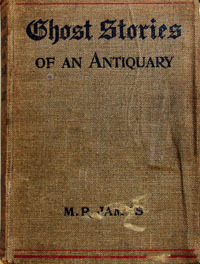
MR James’s Ghost Stories of an Antiquary
Oh, how happy I was to discover these old time-y ghost stories. I especially love “The Mezzotint,” in which a curator receives an unremarkable picture of an unidentified estate. He shares it with an appraiser, hoping to learn why it’s been valued so highly—and the friend observes a figure in the corner of the frame. The narrator seeks out another opinion, and finds the picture has changed again: “In the middle of the lawn in front of the unknown house there was a figure where no figure had been at five o’clock that afternoon. It was crawling on all-fours towards the house, and it was muffled in a strange black garment with a white cross on the back.” And the picture continues to change.
James’ tales are not polished, workshopped fiction–they’re brilliantly creepy, unsettling fragments and vignettes to dip into in October, preferably on a dark day when you’re alone.
Amanda Gale
Frank Norris’s McTeague
The scariest story I’ve ever read is Frank Norris’s novel McTeague. It isn’t only the eerie events that occur, the dark behavior of the characters; the real horror lies in the suggestion that we are all at the mercy of primal, animalistic forces from within, that we are doomed to destinies almost preordained by our flaws. Norris’s characters are ordinary people, merely a few among millions—but each has a unique secret, an undeniable drive in his or her core. In their helplessness, they seem childlike, which makes their actions all the more disturbing and creepy. And though they are caricatures, we can easily find them in the world around us, and that is the scariest part of all.
Ann Gelder
Jo Walton’s Among Others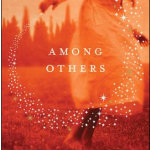
Jo Walton’s Among Others isn’t terrifying in the usual sense, but unsettling—and it’s stayed with me in a way that many other books haven’t. The story uses hints of the supernatural to express the deep sadness and fear of adolescence—especially the sense of possible total rejection by your own family. The world will always feel weird to some of us … but Walton offers us hope for true friendship and great joy.
Daniel Hales
Edgar Allan Poe’s “The Tell-Tale Heart”
The story with the distinction of haunting me for the longest is Poe’s “The Tell-Tale Heart.” I was about 13 at a youth group Halloween party. We were sitting on hay bales in a dark barn after a hayride, and one of the leaders read it by candlelight—and he read it masterfully, smug and calm at first, with mounting hysteria. Then, unexpectedly, he screamed the last lines (the killer’s confession to the police) and blew the candle out. Even more than the spooky setting and the theatrical delivery, the tale stayed with me because it was the first that made me complicit in the crime. In so many scary tales, the killer’s out in the dark, lying in wait. Poe was a master of putting the reader inside the twisted, obsessive brains of madmen. In “The Tell-Tale Heart,” the narrator, tries to deny his insanity, then takes another tack, conceding, even defending his madness: “the disease had sharpened my senses—not destroyed—not dulled them.” What could be scarier than having your own brain, your very senses, conspire to destroy you?
Kieran Lyne
Mary Shelley’s Frankenstein
Frankenstein. It is fabulous not only for its horror elements but also its philosophical, which still resonate today. A man-made monster twisted into evil by the rejection of society, giving chase to its creator, all set within a variety of atmospheric 19th-century backgrounds. What more could you want?
Amy Kathleen Ryan
Stephen King’s The Stand
The most book-scared I’ve ever been was when I read The Stand by Stephen King, a novel that depicts a horrifying pandemic that kills 99% of the world’s population in a few weeks. Cocky singer Larry Underwood decides the best and fastest way out of New York City is by the Lincoln Tunnel, which happens to be stuffed full of dead bodies. And rats. I’m naturally squeamish, and honestly wanted to put the book down but I couldn’t because Stephen King’s masterful prose wouldn’t release me. I still remember how scared I was. It was the middle of a Vermont summer and I had no air conditioning, but I felt cold in my red flannel bath robe. I couldn’t sleep at night, and decided I had to commit every waking moment to finishing the book so that I could finally be free. That was one of the most thrilling reading experiences I’ve ever had.
Tanya Selvaratnam
Stephen King’s Pet Sematary
Choosing a book by Stephen King is obvious, but the truth is the story I was most terrified by was Pet Sematary. It’s about a family torn apart when they move to a small town in Maine near a cemetery for pets and an ancient Indian burial ground where people and animals could be resurrected. When I was reading the book, I was in boarding school in New England, and my bedroom had a view of a cemetery. I had to sleep with the lights on. Also, because of the cat in the book named Church that comes back to life and starts ripping apart other animals, cats freaked me out.
Gabrielle Selz
Shirley Jackson’s The Lottery
The Lottery by Shirley Jackson. So engrossing and simple. My mother, a writer who loved “the gothic” and who wasn’t always careful about what she exposed her children too in the name of art, read this story to me when I was seven. I was shocked by the ending, by the realization that even family members could turn on each other. I understood, on a level I was too young to articulate, that violence and persecution was random. The Lottery was written in 1948, only 3 years after the end of WWII and it perfectly captures Hannah Arendt’s term, The Banality of Evil, to describe Eichman, but also a larger population and their inability to think for themselves. This short story scared me so much that it haunts me even now.
Maureen O’Leary Wanket
Peter Straub’s Ghost Story
Ghost Story by Peter Straub is my favorite horror novel of all time. Straub takes his sweet time telling this awful, intricate story of a group of old men facing the ramifications of an awful thing they did together when they were young. Fred Astaire is in the movie version, which is weird enough in itself. The movie is okay but the book got under my skin from the beginning. I read it for the first time when I was a teenager. The characters of two brothers who live in the woods are awful and terrifying. This is a story of supernatural evil that Straub writes with complete conviction. This is a scary and brutal story, impeccably and elegantly told.
Laura Madeline Wiseman
Ann Patchett’s State of Wonder
I read the audio version of State of Wonder in the evenings the year I finished my Ph.D. and while listening in the darkness of my bedroom, the creepy world of insects, swelter, and sickness made my skin crawl, made me think that the equator would never be a place I wanted to go. One aspect of the novel focuses on the protagonist’s search for her missing colleague in the Amazon rainforest where a scientific study is currently running. It is a place where culture, science, and women’s reproductive capabilities take a haunting twist. It was this—women curiously giving birth in their seventies and sightings of a white creature floating through the treetops—that made me shiver, turn on the lights, and look for a cat to scratch for comfort.
This post is part of the Halloween 2014 series. Find out more about this series here—if you dare.
 Tags: Amanda Gale, Among Others, Amy Kathleen Ryan, Ann Gelder, Ann Patchett, Daniel Hales, Edgar Allan Poe, Frank Norris, Frankenstein, Gabrielle Selz, Ghost Stories of an Antiquary, Ghost Story, Halloween 2014, Jo Walton, Kieran Lyne, Laura Madeline Wiseman, Mary Shelley, Maureen O'Leary Wanket, McTeague, MR James, Pet Sematary, Peter Straub, Shirley Jackson, Star of Wonder, Stephanie Feldman, Stephen King, Tanya Selvaratnam, The Lottery, The Stand, The Tell-Tale Heart
Tags: Amanda Gale, Among Others, Amy Kathleen Ryan, Ann Gelder, Ann Patchett, Daniel Hales, Edgar Allan Poe, Frank Norris, Frankenstein, Gabrielle Selz, Ghost Stories of an Antiquary, Ghost Story, Halloween 2014, Jo Walton, Kieran Lyne, Laura Madeline Wiseman, Mary Shelley, Maureen O'Leary Wanket, McTeague, MR James, Pet Sematary, Peter Straub, Shirley Jackson, Star of Wonder, Stephanie Feldman, Stephen King, Tanya Selvaratnam, The Lottery, The Stand, The Tell-Tale HeartDel.icio.us


TweetThis

Digg

StumbleUpon

Comments: 0 (Zero), Be the first to leave a reply!You might be interested in this:
 Top Ten Romance Releases in 2014
Top Ten Romance Releases in 2014 SCREWING MR. MELTY Cover & Teaser!
SCREWING MR. MELTY Cover & Teaser! Manscaping on Book Covers
Manscaping on Book Covers Writers Who Read: Maureen O'Leary Wanket
Writers Who Read: Maureen O'Leary Wanket Weird Writing ResearchCopyright © G. G. Andrew [Writers Who Read: Scariest Stories Ever], All Right Reserved. 2014.
Weird Writing ResearchCopyright © G. G. Andrew [Writers Who Read: Scariest Stories Ever], All Right Reserved. 2014.Exploring an Undiscovered Country
Today I welcome a guest post from Orrin Grey, author of
Gardinel’s Real Estate, writing about haunted spaces and how
Gardinel’s
came into existence, for the Halloween 2014 post series.
“An evil old house, the kind some people call haunted, is like an undiscovered country waiting to be explored.”
The Haunting (1963)
I don’t really know where my infatuation with haunted locales began. Was it the Halloween haunted attractions of my youth, some book or movie, or has it always been there, a hole in my heart in the shape of an old, dark house?
Over the years, a lot of influences have shaped my fascination: The movie from whose opening lines I drew the title for this essay and the book upon which it was based; Richard Matheson’s fantastic spiritualist haunted house thriller Hell House, which is still my favorite haunted house tale; dozens of matte paintings of fog-shrouded manors and mountaintop castles in old movies; decaying Hollywood mansions in slightly newer movies; those big spooky houses that women in their nightclothes are always fleeing from on Gothic novel covers; countless hours parked in front of Castlevania games, exploring their labyrinthine castles; Betrayal at House on the Hill, which might be my favorite board game.
Whatever their shape, places play a prominent role in a lot of my favorite horror media, and haunted or spooky places have a special place in my heart. That’s part of the reason I jumped at the opportunity to do Gardinel’s Real Estate when M.S. Corley approached me with the project. Mike Corley was already one of my favorite artists and cover designers, and we’d been online friends for a couple of years when he came up with the idea. The pitch was simple: He’d been drawing spooky houses, and he wanted me to write descriptions of them for a fake real estate pamphlet. He even already had the name “Gardinels” attached, though at the time it was just plural, a reference to the carnivorous houses from the folklore of one of our shared favorite pulp authors, Manly Wade Wellman. (Wellman’s gardinels are sort of plant houses—like a pitcher plant or venus flytrap, but sized for people. For our project we just borrowed the name, but maybe also a bit of the spirit, at least we hope so.)
Mike would draw the houses, and then he’d send them to me and I’d write up a little description of them. I’m the one who came up with the idea of using the Gardinel name as a real estate firm, and who invented our estate agent narrator Cedric Gardinel. Hence, Gardinel’s Real Estate was born.
It’s available right now, just in time for the most haunted of all seasons, in a limited run of 100 signed and handnumbered copies that are selling out fast, so click here to get yours today!
Inside are thirteen houses, each one lovingly rendered and explicitly detailed. After all, Gardinel’s Real Estate caters to a very specialized clientele, and for the “unique” clients who come seeking their “unusual” properties, a haunted history is a selling point! Not all the houses you’ll find in Gardinel’s are haunted in the same sense as The Haunting or Hell House—there are tales of witchcraft, hidden fortunes, demonic portraits, accusations of vampirism, a haunted chair, and several experiments of a “most unusual nature”—but they are all undiscovered countries waiting to be explored. And of course, if Gardinel’s doesn’t have the property that’s right for you, something can surely be arranged… if you have the right collateral.
Orrin Grey is a writer, editor, amateur film scholar, and monster expert who was born on the night before Halloween. He’s the author of Never Bet the Devil & Other Warnings and the co-editor (with Silvia MorenoGarcia) of Fungi, an anthology of weird fungal stories. You can visit him online at orringrey.com.
 Tags: Betrayal at House on the Hill, Castlevania, demonic, fungal stories, Gardinel's Real Estate, gothic novel, Halloween, Halloween 2014, haunted houses, Hell House, M.S. Corley, Manly Wade Wellman, Orrin Grey, The Haunting, vampirism, witchcraft
Tags: Betrayal at House on the Hill, Castlevania, demonic, fungal stories, Gardinel's Real Estate, gothic novel, Halloween, Halloween 2014, haunted houses, Hell House, M.S. Corley, Manly Wade Wellman, Orrin Grey, The Haunting, vampirism, witchcraftDel.icio.us


TweetThis

Digg

StumbleUpon

Comments: 0 (Zero), Be the first to leave a reply!You might be interested in this:
 Kids & Board Books (An Apology to Sandra Boynton)
Kids & Board Books (An Apology to Sandra Boynton) What Good Books Do
What Good Books Do Mr. Melty Curried Carrot Concoction
Mr. Melty Curried Carrot Concoction Writers Who Read: Kelly Ann Jacobson
Writers Who Read: Kelly Ann Jacobson SCREWING MR. MELTY Cover & Teaser!Copyright © G. G. Andrew [Exploring an Undiscovered Country], All Right Reserved. 2014.
SCREWING MR. MELTY Cover & Teaser!Copyright © G. G. Andrew [Exploring an Undiscovered Country], All Right Reserved. 2014.September 30, 2014
Writers Who Read: Heidi Hutner
Our Writers Who Read series continues this week with writer Heidi Hutner.
Who are you?
I am Heidi Hutner, a professor of literature and sustainability, a director of the sustainability studies program at Stony Brook University. I am a single mom, a writer, and an environmentalist. I’m working on two big writing projects: a book about environmental education, and a memoir about my relationship with my mother, who was an anti-nuclear activist in the 1950s and early 60s. In a previous incarnation, I was a scholar of the 18th century and I wrote literary criticism about writing in that time period. My focus was on women writers and race.
What are three beloved books you first read before the age of 12?
The Narnia books. They are the reason I became a reader. The other reason I became a reader (I discovered the Narnia books during this time), was that we left the U.S. to live in France for two years (and then Israel for a year) when I was ten. There was no TV (or very, very little), and so I turned to reading. When we lived in the U.S., I barely read at all. I fell in love with literature when we moved to France and never turned back.
What is one book you are always recommending to friends and family (and maybe the local barista) as an adult?
I have a very strong interest in environmental issues, and I care deeply about pollution and connections to cancer and other disease, so I always recommend Living Downstream by Sandra Steingraber. Sandra is a friend and an ally in the environmental movement. Her writing is really beautiful, she’s a biologist, and an activist–she combines personal writing with great research. I love all of her work. She also contributes to Orion magazine regular and she’s an amazing speaker. I love the way she combines gorgeous language with science and environmental advocacy.
What is your book kryptonite–those unique elements in a book, beyond just great writing and three-dimensional characters, that make you unable to resist reading?
What is your ideal time and place to read? I don’t have an ideal time and place; rather, I would say that an ideal life leaves much time for reading.
Which books have had the biggest influence on your writing?
Sigh. I have been very influenced by modernist writers like Joyce and Woolf, I love 19th century British novels (I’ve read most of them), and I’m a scholar of 18th Century British Literature (that’s what I wrote about and taught at the university level for twenty years; however, I feel most at home in the land of contemporary women writers, such as Sandra Steingraber, Susanne Antonetta and Terry Tempest Williams, Rebecca Solnit, and Susan Griffin. Women who tackle complex issues, who write beautifully and in complicated ways about the body, about disease, about the earth. I feel very connected to Alice Walker’s and Edwidge Danticat’s work as well. Racial issues have always been very important to me. I see many significant connections between feminism, racism, and the environment. This three points are crucial to my own current writing, research and teaching.
How do you balance reading and writing in your life?
As a literature professor and professional writer, reading and writing are a central part of my work life, but increasingly I find myself distracted by social media and environmental activism and advocacy, so it’s challenging sometimes to find the quiet space I need to read and write as much as I’d like. I know that when I do find this space, I feel most happy and at peace with myself. It’s a balancing act.
Choose your preferred book form: ebook, physical book, or audio book?
Physical book.
Do you consciously plan your future reading–i.e., set book goals, keep a TBR list, participate in book challenges or book clubs? Why or why not?
No… I tend to focus on things I need to read for my classes, or if I have a writing project that needs research (often the case) that’s what I read. I find it harder and harder to fall in love with a book, though, and that’s disturbing. I have decided to go back and read a bunch of American literature that I never got to as I spent most of my life reading and studying British literature.
What are you reading now?
I just finished Diary of a Hedgehog. I really loved that. I am teaching and reading a book called Plutopia. It’s really interesting, but I like it for the information rather than for the writing. The topic is key as we’re studying the history of nuclear weapons and power. This book is about Russia and the U.S. during the cold war and it looks at two similar towns in each country. It’s nonfiction. I plan to read Moby Dick next.
You can find out more about Heidi on her blog, Facebook, or Twitter.
 Tags: 18th century, 19th century, Alice Walker, British, Diary of a Hedghog, Edwidge Danticat, environmental education, Heidi Hutner, literature, Living Downstream, memoir, Moby Dick, Narnia, Plutopia, Sandra Steingraber, Stony Brook University, Susanne Antonnetta, sustainability, Terry Tempest Williams, Writers Who Read
Tags: 18th century, 19th century, Alice Walker, British, Diary of a Hedghog, Edwidge Danticat, environmental education, Heidi Hutner, literature, Living Downstream, memoir, Moby Dick, Narnia, Plutopia, Sandra Steingraber, Stony Brook University, Susanne Antonnetta, sustainability, Terry Tempest Williams, Writers Who ReadDel.icio.us


TweetThis

Digg

StumbleUpon

Comments: 0 (Zero), Be the first to leave a reply!You might be interested in this:
 Romance Flash Fiction
Romance Flash Fiction Writers Who Read: Maureen O'Leary Wanket
Writers Who Read: Maureen O'Leary Wanket Writing & Parenting
Writing & Parenting Making Mr. Melty Ice Cream: Frozen Fruity Flaxseed
Making Mr. Melty Ice Cream: Frozen Fruity Flaxseed Writers Who Read: Amanda GaleCopyright © G. G. Andrew [Writers Who Read: Heidi Hutner], All Right Reserved. 2014.
Writers Who Read: Amanda GaleCopyright © G. G. Andrew [Writers Who Read: Heidi Hutner], All Right Reserved. 2014.September 23, 2014
Writers Who Read: Tellulah Darling
Our Writers Who Read series continues this week with young adult romantic comedy author Tellulah Darling. I highly recommend her book
Sam Cruz’s Infallible Guide to Getting Girls
. It’s hilarious and fun, and I love the voice of the male character.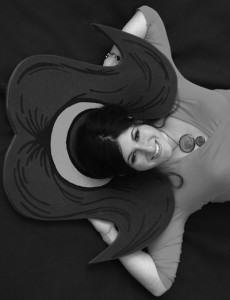
Who are you?
Tellulah Darling
noun
1. YA romantic comedy author because her first kiss sucked and she’s compensating.
2. Alter ego of former screenwriter.
3. Sassy minx.
Writes about: where love meets comedy. Awkwardness ensues.
What are three beloved books you first read before the age of 12?
A LIttle Princess, Island of the Blue Dolphins and The Hitchhiker’s Guide to the Galaxy.
What is one book you are always recommending to friends and family (and maybe the local barista) as an adult?
There are so many! Lately though, I am constantly pimping out Melina Marchetta’s phenomenal Lumatere Chronicles: Finnikin of the Rock, Froi of the Exiles and Quintana of Charyn.
What is your book kryptonite–those unique elements in a book, beyond just great writing and three-dimensional characters, that make you unable to resist reading?
A witty steamy romance. Full stop.
What is your ideal time and place to read?
Not sure I understand the question. Is there ever a time and a place NOT to read?
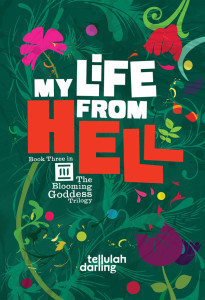 Which books have had the biggest influence on your writing?
Which books have had the biggest influence on your writing?
I don’t know if I could list off specifics. I think every book I’ve read – whether I liked it or not – influenced me. Either because I was so blown away by a playfulness with language or incredible wit or heartwrenching drama or a fantastic vividness of worldbuilding, or because any of those elements among others were so awful in what I read I knew that I didn’t want to do that.
How do you balance reading and writing in your life?
I’m always reading. But what I do find interesting is that if I’m really stuck on a story problem, I don’t want to read heavy literary fiction or a genre book that is going to require a lot of heavy lifting mentally or emotionally. I want something that is pure escapist pleasure so my brain can work in the background on whatever I need to address.
Choose your preferred book form: ebook, physical book, or audio book?
I can’t believe I’m saying this because I was such a print book snob but ebook. I love my kindle. Love how light it is. Love I can read all my wonderful genre books without the annoying judgy looks I get in public from both strangers and co-workers. That said, the Amazon one-click button is really dangerous because my mind treats it like a library check out which at the end of the month, when I get my credit card bill, I remember it is not. 
Do you consciously plan your future reading–i.e., set book goals, keep a TBR list, participate in book challenges or book clubs? Why or why not?
I do have a TBR list but I don’t read those books in any kind of order. It’s more a reminder for myself that I wanted to check out a certain title at some point. This is the first year I’ve participated in a book challenge. My friends at Fiction Fare are running a real book challenge to see how many print books we still read. I was curious about that, given how much I read digitally so I’m doing that this year.
What are you reading now?
Good question! I read a ton of fabulous books in May and more recently a ton of meh ones. So I’m actually stumped for my next read. Anyone got any good suggestions?
You can find out more about Tellulah at her website, Facebook page, Twitter, or Goodreads.
 Tags: A Little Princess, ebook, Fiction Fare, Goodreads, Island of the Blue Dolphin, Kindle, Lumatere Chronicles, romance, romantic comedy, Tellulah Darling, The Hitchhiker's Guide to the Galaxy, young adult
Tags: A Little Princess, ebook, Fiction Fare, Goodreads, Island of the Blue Dolphin, Kindle, Lumatere Chronicles, romance, romantic comedy, Tellulah Darling, The Hitchhiker's Guide to the Galaxy, young adultDel.icio.us


TweetThis

Digg

StumbleUpon

Comments: 0 (Zero), Be the first to leave a reply!You might be interested in this:
 Top 10 Ways to Use Twitter Without Losing Your Soul
Top 10 Ways to Use Twitter Without Losing Your Soul SCREWING MR. MELTY Cover & Teaser!
SCREWING MR. MELTY Cover & Teaser! Writing Romance: Sex as Dialogue
Writing Romance: Sex as Dialogue Kids & Board Books (An Apology to Sandra Boynton)
Kids & Board Books (An Apology to Sandra Boynton) What's Your Book Diet?Copyright © G. G. Andrew [Writers Who Read: Tellulah Darling], All Right Reserved. 2014.
What's Your Book Diet?Copyright © G. G. Andrew [Writers Who Read: Tellulah Darling], All Right Reserved. 2014.September 22, 2014
Daniel Hales: Top Ten Prose Poetry Books
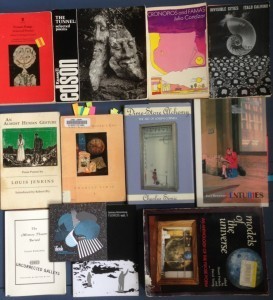 This week I’m welcoming a guest post by Daniel Hales, whose new book of poetry, Tempo Maps (ixnay press, Philadelphia), will be released this Saturday when he reads at the Philly Art Alliance as part of the Philalalia Small Press Festival. Here Daniel shares his ten favorite books of prose poetry from roughly the last fifty years, in chronological order.
This week I’m welcoming a guest post by Daniel Hales, whose new book of poetry, Tempo Maps (ixnay press, Philadelphia), will be released this Saturday when he reads at the Philly Art Alliance as part of the Philalalia Small Press Festival. Here Daniel shares his ten favorite books of prose poetry from roughly the last fifty years, in chronological order.
1. Selected Poems (1935 – 1974 / 1998, Faber and Faber) Francis Ponge
As the title of his first book announced (Le Parti des choses, translated as either Siding With Things or The Voice of Things), Ponge sides with/gives voice to some of the most mundane, homely things there are: crates, suitcases, stoves, even a pile of dung (“One has come to consider you as something precious”). A pebble is a “stone at the exact age when personality, individuality, in other words, language, emerges.” He also offers fascinating insights on a wide range of living things, including mollusks, snails, lizards, frogs, seashores, moss (“the advance guard of vegetation”). And in case you didn’t already know, a swallow is a “steel pen, dipped in blue-black ink” that writes itself so fast it “leave(s) no mark… “
2. The Tunnel: Selected Poems (1961 – 1985 / 1994, Field) Russell Edson
Russell Edson was the most influential American prose poet of the second half of the twentieth century (he certainly was for me), and yet news of his passing on April 29th of this year did not show up in the “Currently Trending” bar in your Facebook feed. For lovers of the prose poem, though, it felt like the end of an era. The Tunnel contains Edson’s own favorites from his first seven books (which are his best): bizarro fables that tell hilarious and often hideous truths about how human beings (and other primates), especially husbands and wives, parents and children, treat each other. I dare you to read “Ape and Coffee” or “The Neighborhood Dog” out loud and not laugh. I double dare you. If you’re reading this list and happen to be new to prose poetry, I don’t think there’s a better route into it than The Tunnel.
3. Cronopios and Famas (1962 / 1969, Pantheon) Julio Cortazar
“THIS BOOK CONTAINS THE FOLLOWING ASSORTMENT: The Instruction Manual; Unusual Occupations; Unstable Stuff; Cronopios and Famas.” In other words, I was already completely intrigued by the time I reached the table of contents. The Instruction Manual will finally teach you the correct way to sing, cry, be afraid, understand famous paintings, comb the hair, climb a staircase, wind a watch, kill ants in Rome, and dissect a ground owl. Read Unusual Occupations and you’ll never have another dull moment for the rest of your life. In the first poem, a family builds a gallows in the front yard and becomes the envy of the whole neighborhood. In Unstable Stuff, the poem “Headlessness” begins thus: “They cut off this gentleman’s head, but as a strike broke out among the gravediggers and they couldn’t bury him, the gentleman had to go on living headless and manage as well as he could.” And what exactly are Cronopios and Famas? I’m sorry, but I feel like I’ve already given too many spoilers. You’ll have to get the book if you want to find that out.
4. Invisible Cities (1972, Harcourt Brace Jovanovich) Italo Calvino
Invisible Cities is one of the books on this list that most bends the form (are they prose poems, mini fictions, excerpts from a journal-travelogue-novel?). But why write prose poems in the first place if you don’t take pleasure in bending forms? A series of reports from Marco Polo to Kublai Khan about the fantastic cities he’s visited in his travels around the Khan’s expanding empire, this is one of my favorite books of all time. In one afternoon of reading you can visit many of the most evocative places in the empire of the imagination. Stop by Isidora, a city of “spiral staircases encrusted with spiral seashells, where perfect telescopes and violins are made, where a foreigner hesitating between two women always encounters a third.” In Zirma you are guaranteed to see “a lunatic teetering on a skyscraper’s cornice, a girl walking a puma on a leash.” Then there are cities like Fedora where you can admire a succession of crystal globes; in each you see the model of a different Fedora… the forms the city could have taken if, for some reason or another, it had not become what we see today.” Here we catch a glimpse of the true magnificence of Calvino’s project: each city in this book (and in our world) is an infinity of possible cities. Each place is its past, present, future, multiplied by the subjective perceptions of each resident, each traveler, from moment to moment.
5. An Almost Human Gesture (1987, Eighties Press) Louis Jenkins
For over thirty years Louis Jenkins has been crafting fine prose poems, but this, his first full-length book, remains my favorite. It’s a mix of short observations, character sketches, and what, at first glance, appear to be small every-day occurrences, which Jenkins exposes for the mysteries they are. His writing is refreshingly conversational, direct and un-fussy. Jenkins’ poems also have a strong sense of place, which is somewhat unique. Modern/Postmodern prose poems can tend to gravitate toward the abstract, the universal. Jenkins’ small poems stand on their own, but they also seem to build on each other to lend this slim book more cumulative heft. When his poems motion with an “almost human gesture” for you get out of your car and follow them off into the woods of northern Minnesota, you will regret it if you don’t.
6. The World Doesn’t End (1989, Harvest) Charles Simic
Charles Simic’s prose poems read a bit like comic book updates of the 19th/early 20th century French prose poets (The beloved Clown-Saint of the prose poem, Max Jacob, especially comes to mind). If you think that statement is a dis, you don’t like comic books as much as I do. Simic touches on many of the themes and tropes his French heroes did, but with more spare, austere language. Simic’s poems are also more playful and accessible–but that doesn’t mean he won’t occasionally lure you down a blind alley that turns out to be the entrance to a labyrinth. Also highly recommended: Simic’s Dime Store Alchemy: The Art of Joseph Cornell. Cornell’s magical collage boxes seem like a perfect visual analogy for the prose poem. Simic pays homage to Cornell with a miscellany comprised of prose poems, reflections, diary entries, notes, and micro-essays on/about/around Cornell and his art.
7. Centuries (2003, Four Way) Joel Brouwer
As far as I know, Joel Brouwer invented the “century:” a prose poem consisting of exactly 100 words (don’t you wish you’d thought of that?). I often see those blurbs on books along the lines of “the poet surprises us at every turn” (and usually want to roll my eyes), but Brouwer really does succeed in surprising–at times even startling–me from line to line, twist to twist, century to century. A casual reader might decide Brouwer’s absurdist scenarios were written simply to make us laugh, but as fun and funny as these poems are, there’s real darkness, despair, and danger in them. All the paintings in the museum turn into mirrors. The master sends his best pupils to the cellar to live on crickets. In “Clearing” you’re relieved to arrive at a beautiful clearing in the woods—where you will be an accomplice in a murder. In “Diagnosis” the doctor tells you “your insides are like a jungle at night” where two endangered animals are fighting to the death, and it’s still too early to tell which one will win.
8. The Memory Palace Burned (2004, Turtle Point Press) Damon Krukowski
If you can write prose poems this good, and you were/are also a member of the bands Galaxy 500 and Damon & Naomi, it’s possible you’re one of the coolest people alive. If you don’t believe me, just read “Ghosts,” in which a six ghosts smoke cigarettes, tell jokes, show off their tattoos, and then play the loudest music you ever heard (except for that one ghost playing the silent tambourine). Krukowski’s prose poems are fractured fables, parables, fragments of grand narratives rescued from the embers and ashes of the Memory Palace.
9. Fjords, Vol. 1 (2012, Black Ocean) Zachary Schomburg
Many of the poems in Fjords could qualify as half-centuries (see #7). They go to the kind of dark, scary, hilarious places that Brouwer’s poems frequent, but they often get there a lot faster (even, somehow, when they’re actually longer than a “century”). In fact most Fjords begin in-media-res: you’re already at the scariest part of the nightmare, and then, through a series of lightning-fast associative leaps, it gets even scarier. Or funnier. Or sadder. Or more beautiful. Or more often than not: all of the above. And if you’re also a huge fan of music based on strange little books of poems, make sure you track down the companion cd by Kyle Vegter and the Chicago Q Ensemble: music for luxury liners to play as they prepare to crash into fjords while a family of swans looks on impassively.
10. Models of the Universe: An Anthology of the Prose Poem (1842 – 1995 / 1995, Field) edited by Stuart Friebert
An indispensable catch-all for the vast array of great writers I missed, especially the French giants that first championed the form during the first 100 years or so of the prose poem’s life (Baudelaire, Mallarme, Rimbaud, Fargue, Jacob–and later–Reverdy, Michaux, Follain, Char). Here we see how deeply rooted the prose poem is in surrealism, cubism, and various other realms of weirdness that lie beyond –isms. This anthology also cherry picks excellent prose poems from scores of 20th century writers from around the world that I didn’t include here either because they didn’t publish any volumes of just prose poems, or simply because it’s impossible to cover everything you should with these blasted top ten lists. Considering this anthology is 20 years old (3 books on my list were published since it came out), I’d say it’s high time for a new, expanded edition…
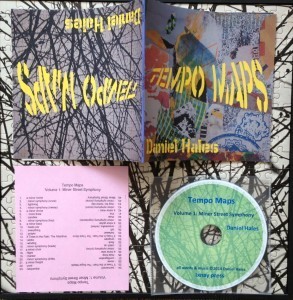 Daniel Hales is the author of Tempo Maps. Tempo Maps, comprised mostly of prose poems, is a tough book to pin down, but that doesn’t mean you won’t have fun trying. Longer than a chapbook, but not quite long enough to be a full-length volume, attempts to map its tempos are further complicated by its 2 covers, 2 possible points of entry, 2 alternate beginnings and ends, 2 equally correct orientations. Tempo Maps also comes with a companion CD comprised of 46 tracks: Hales reading the poems, instrumental interludes, and a long piece called the Miner Street Symphony. You can order it by emailing Daniel at: selahsongs@hotmail.com.
Daniel Hales is the author of Tempo Maps. Tempo Maps, comprised mostly of prose poems, is a tough book to pin down, but that doesn’t mean you won’t have fun trying. Longer than a chapbook, but not quite long enough to be a full-length volume, attempts to map its tempos are further complicated by its 2 covers, 2 possible points of entry, 2 alternate beginnings and ends, 2 equally correct orientations. Tempo Maps also comes with a companion CD comprised of 46 tracks: Hales reading the poems, instrumental interludes, and a long piece called the Miner Street Symphony. You can order it by emailing Daniel at: selahsongs@hotmail.com.
 Tags: books, Charles Simic, Damon Krukowski, Daniel Hales, Francis Ponge, Italo Calvino, ixnay press, Joel Brouwer, Julio Cortazar, Louis Jenkins, Philadelphia, Philalalia Small Press Festival, Philly Art Alliance, poetry, prose poetry, Russell Edson, Tempo Maps, Zachary Schomburg
Tags: books, Charles Simic, Damon Krukowski, Daniel Hales, Francis Ponge, Italo Calvino, ixnay press, Joel Brouwer, Julio Cortazar, Louis Jenkins, Philadelphia, Philalalia Small Press Festival, Philly Art Alliance, poetry, prose poetry, Russell Edson, Tempo Maps, Zachary SchomburgDel.icio.us


TweetThis

Digg

StumbleUpon

Comments: 0 (Zero), Be the first to leave a reply!You might be interested in this:
 Kids & Board Books (An Apology to Sandra Boynton)
Kids & Board Books (An Apology to Sandra Boynton) What's Your Book Diet?
What's Your Book Diet? Romance Blurb Drinking Game
Romance Blurb Drinking Game Writers Who Read: Stephanie FeldmanCopyright © G. G. Andrew [Daniel Hales: Top Ten Prose Poetry Books], All Right Reserved. 2014.
Writers Who Read: Stephanie FeldmanCopyright © G. G. Andrew [Daniel Hales: Top Ten Prose Poetry Books], All Right Reserved. 2014.September 17, 2014
Writers Who Read: Ann Gelder
Our Writers Who Read series continues this week with writer Ann Gelder.
Who are you?
A novelist, nonfiction writer, and recovering academic. My first novel, Bigfoot and the Baby, published by Bona Fide Books this past June, tells the story of a frustrated homemaker who searches for God and finds Bigfoot instead. (You can learn more at Bona Fide Books.)
What are three beloved books you first read before the age of 12?
Harriet the Spy (sat at the window of my parents’ bedroom and took notes on passing neighbors). The Wizard of Oz (fell in love with the Tin Woodman). Bread and Jam for Francis (ate lots of bread and jam, before anyone knew how bad carbs are for you).
What is one book you are always recommending to friends and family (and maybe the local barista) as an adult?
Ever since I read it in college, I’ve been obsessed with Soviet-era novella called Envy by Yuri Olesha. First off, how could a writer not love a book called Envy? And in fact it is about an envious writer. But it also contains some really beautiful, bizarre yet accurate imagery such as I’ve encountered nowhere else. Olesha also plays with point of view, switching from first to third person when the main character steps in front of a mirror in the street. Plus it’s funny, in a pretty dark and horrifying way.
What is your book kryptonite–those unique elements in a book, beyond just great writing and three-dimensional characters, that make you unable to resist reading?
I would say some fabulist element mixed in with a largely realistic story (I’m not a fan of pure fantasy). If a story is described as “a gritty portrait of real life,” I tend to shy away. I like a sea monster or UFO to pop up at some point. For example, those sorts of things happen in otherwise realistic if over-the-top Iris Murdoch novels (I’m thinking of The Sea, The Sea and The Philosopher’s Pupil)–and that’s enough for me. Just a glimpse of some other reality makes me very happy.
What is your ideal time and place to read?
I often read in the early evening, as a kind of reward for the workday. It makes a nice buffer zone between work (even or especially my own work) and down-time.
Which books have had the biggest influence on your writing?
Envy, which I’ve mentioned above. The Brothers Karamazov, which I actually allude to several times in Bigfoot and the Baby … although I suspect not everyone will pick up on that. Several Margaret Atwood books, notably The Blind Assassin. And White Noise by Don DeLillo.
How do you balance reading and writing in your life?
It’s not always easy. Sometimes I think I use reading as an excuse for not writing. I tell myself I’m “doing research” or “seeking inspiration,” when I’m really just avoiding. On the other hand, I think reading constantly is critical for writers, and my best ideas or solutions often come to me while I’m reading–because it takes my focus off my own work and allows me to view it askance.
Choose your penned poison: ebook, physical book, or audio book?
I’m liking physical books more and more every day. Ebooks are nice for plane rides particularly, but I stare at a screen all day, and really don’t want to do that any more than I have to. I do like audio books, but tend not to retain anything that I hear. I like to be able to flip back and forth between pages.
Do you consciously plan your future reading–i.e., set book goals, keep a TBR list, participate in book challenges or book clubs? Why or why not?
Not really. I’ll happen upon a book in a store or via recommendations, and immediately want to read that particular book. If I made a list I wouldn’t stick to it.
What are you reading now?
I love popular science, and right now I’m reading Richard Fortey’s Horseshoe Crabs and Velvet Worms: The Story of the Animals and Plants That Time Has Left Behind. I find the precision and focus of science very refreshing, and I try to carry those qualities over into my fiction.
You can find out more about Ann at her website or on Twitter: @AnnBGelder.
 Tags: Ann Gelder, Bigfoot and the Baby, Bread and Jam for Francis, fabulism, Harriet the Spy, Iris Murdoch, Margaret Atwood, Richard Fortey, science, The Blind Assassin, The Brothers Karamazov, The Wizard of Oz, White Noise, Writers Who Read, Yuri Olesha
Tags: Ann Gelder, Bigfoot and the Baby, Bread and Jam for Francis, fabulism, Harriet the Spy, Iris Murdoch, Margaret Atwood, Richard Fortey, science, The Blind Assassin, The Brothers Karamazov, The Wizard of Oz, White Noise, Writers Who Read, Yuri OleshaDel.icio.us


TweetThis

Digg

StumbleUpon

Comments: 0 (Zero), Be the first to leave a reply!You might be interested in this:
 Top Ten Ways to Create Readers
Top Ten Ways to Create Readers Writers Who Read: Amy Thomas
Writers Who Read: Amy Thomas SCREWING MR. MELTY Cover & Teaser!
SCREWING MR. MELTY Cover & Teaser! It's Not Just Me. Right?
It's Not Just Me. Right? Writers Who Read: Tanya SelvaratnamCopyright © G. G. Andrew [Writers Who Read: Ann Gelder], All Right Reserved. 2014.
Writers Who Read: Tanya SelvaratnamCopyright © G. G. Andrew [Writers Who Read: Ann Gelder], All Right Reserved. 2014.September 15, 2014
Blog Hop: My Writing Process
This month I’ve been tagged by a fellow author in a blog hop where I answer questions about my writing process and then tag three more writers.
I was tagged by the lovely romance writer Rebecca Brooks, who wrote about her writing process here. Here’s a bit more about Rebecca:
 Rebecca Brooks lives in New York City in an apartment filled with books. She received a PhD in English but decided it was more fun to write books than write about them. She has backpacked alone through India and Brazil, traveled by cargo boat down the Amazon River, climbed Mt. Kilimanjaro, explored ice caves in Peru, trekked to the source of the Ganges, and sunbathed in Burma, but she always likes coming home to a cold beer and her hot husband in the Bronx. Her books are about independent women who leave their old lives behind to try something new—and find the passion, excitement and purpose they didn’t know they’d been missing.
Rebecca Brooks lives in New York City in an apartment filled with books. She received a PhD in English but decided it was more fun to write books than write about them. She has backpacked alone through India and Brazil, traveled by cargo boat down the Amazon River, climbed Mt. Kilimanjaro, explored ice caves in Peru, trekked to the source of the Ganges, and sunbathed in Burma, but she always likes coming home to a cold beer and her hot husband in the Bronx. Her books are about independent women who leave their old lives behind to try something new—and find the passion, excitement and purpose they didn’t know they’d been missing.
And here are my answers to the questions on my writing process:
What am I working on/writing?
After breaking my brain doing a lot of intense revising this summer, I’ve changed pace and am working on drafts of a couple new writing projects.
The first, collaborating with my husband, is a superhero romantic comedy set in a world where superheroes outnumber the non-supers, called “delicates.” A superhero woman gets suddenly trapped in a bank with some bad superheroes—along with a non-super guy she finds incredibly obnoxious. My husband and I alternate writing chapters from the woman’s or man’s point of view, with him writing the female chapters, and me the guy’s.
I’m also trying to write a short horror story—though, since I’m probably more a romance girl at heart, my scary story includes some stolen kisses. Although said stolen kisses may be precursors to a monster jumping out or someone getting their arm ripped off.
How does my work/writing differ from others of its genre?
I write mostly romance, usually romantic comedy, but my stories differ from other romances in that they are often strange and sometimes wacky. I write about finding love in unusual and fun settings, like haunted houses, or with unconventional characters like graffiti artists. I favor strong and irreverent humor, crazy sex scenes, and unique twists.
I’m also a big believer in character development that goes beyond the romance in the story. Though I define romance as a story where the romantic relationship is the vehicle for a character’s change, I like the character’s arc to have ramifications for other aspects of his/her life. I don’t want to just write a story where two people fall in love; I want to write a story where two people fall in love and the changes they evoke in each other cause them to make peace with their past or decide to join a travelling circus.
Why do I write what I do?
Even though I didn’t always realize I wanted to be a writer, I’ve always been a romantic. I’ve created stories in my head since I was a little girl, and these stories were almost always romantic. Today, the Tv shows that compel me the most feature an intense relationship, and I’m drawn to books with the same.
I’m interested in how people and characters reveal themselves in relationships, and romantic relationships are often the most tantalizing–passionate, sometimes resisted, occasionally forbidden, and of course full of surprise kisses. I love writing witty dialogue, sexual tension, sex scenes, and bawdy language–all of which often fall under the umbrella of romance and romantic comedy.
How does my writing process work?
Haphazardly, if I’m honest. Like other areas of my life, I have the best of intentions and the not-best of follow through. Ideally I try to write first thing in the mornings, and read in the evenings. But often I’ll oversleep and/or have to squeeze in writing at other times, like when my younger son is napping and the older is at school, or in the evenings. I’m still creating and finishing stories, though, which is the important thing. I generally prefer to do a rough draft and immediately put it aside for a couple months at least. Then I’ll return to it, make a couple passes of revisions and editing, send it to beta readers for feedback, and then do a few more passes.
And now I’m tagging three other writers to answer these questions! Here goes:
 Jonathan Andrew has been writing stories for as long as he can remember. His stories focus on witty dialogue, unexpected plot twists, and unlikely heroes. He writes in all kinds of genres for all kinds of folks — Science Fiction and Fantasy, Comedy, Historical Fiction, Suspense — but always with a bit of the surreal thrown in for good measure. He also blogs about comic books and writing at jonathanandrew.org. He is currently working on two series of novels with the writer Danielle Neruda. He and his wife, the novelist G.G. Andrew, are the parents of two young boys, one of whom is on the autism spectrum. You can follow him on Twitter @andrewnovelist.
Jonathan Andrew has been writing stories for as long as he can remember. His stories focus on witty dialogue, unexpected plot twists, and unlikely heroes. He writes in all kinds of genres for all kinds of folks — Science Fiction and Fantasy, Comedy, Historical Fiction, Suspense — but always with a bit of the surreal thrown in for good measure. He also blogs about comic books and writing at jonathanandrew.org. He is currently working on two series of novels with the writer Danielle Neruda. He and his wife, the novelist G.G. Andrew, are the parents of two young boys, one of whom is on the autism spectrum. You can follow him on Twitter @andrewnovelist.
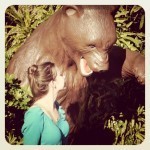 Jenny Vinyl: I write for fun on evenings and weekends and am thankful for a 9 to 5 job that gives me the time and energy to pursue other (mostly nerdy) hobbies like reading (of course!), crafting, movie-watching, and walking around the city. Will likely never refuse an invitation involving the eating of ice cream, frozen yogurt, custard, or related products. You can find out more at my website.
Jenny Vinyl: I write for fun on evenings and weekends and am thankful for a 9 to 5 job that gives me the time and energy to pursue other (mostly nerdy) hobbies like reading (of course!), crafting, movie-watching, and walking around the city. Will likely never refuse an invitation involving the eating of ice cream, frozen yogurt, custard, or related products. You can find out more at my website.
 Elizabeth Cole is a romance author with a penchant for history, which is why she lives in an old house in an old city. She is the author of the sexy Secrets of the Zodiac and the sweet Regency Rhapsody series. She can be found hanging around libraries and archives, or curled in a corner reading, cat on lap. She believes in love at first sight. Then again, she also believes that mac ‘n’ cheese is a healthy breakfast, so don’t trust her judgment on everything. Find out more at elizabethcole.co.
Elizabeth Cole is a romance author with a penchant for history, which is why she lives in an old house in an old city. She is the author of the sexy Secrets of the Zodiac and the sweet Regency Rhapsody series. She can be found hanging around libraries and archives, or curled in a corner reading, cat on lap. She believes in love at first sight. Then again, she also believes that mac ‘n’ cheese is a healthy breakfast, so don’t trust her judgment on everything. Find out more at elizabethcole.co.
 Tags: books, character development, contemporary romance, Elizabeth Cole, fantasy, horror, Jenny Vinyl, Jonathan Andrew, reading, Rebecca Brooks, revising, romance, romantic comedy, superheroes, television, writing, writing process
Tags: books, character development, contemporary romance, Elizabeth Cole, fantasy, horror, Jenny Vinyl, Jonathan Andrew, reading, Rebecca Brooks, revising, romance, romantic comedy, superheroes, television, writing, writing processDel.icio.us


TweetThis

Digg

StumbleUpon

Comments: 0 (Zero), Be the first to leave a reply!You might be interested in this:
 Top 10 Ways to Use Twitter Without Losing Your Soul
Top 10 Ways to Use Twitter Without Losing Your Soul It's Not Just Me. Right?
It's Not Just Me. Right? Kids & Board Books (An Apology to Sandra Boynton)
Kids & Board Books (An Apology to Sandra Boynton) Mr. Melty Curried Carrot Concoction
Mr. Melty Curried Carrot Concoction Top Ten Romance Releases in 2014Copyright © G. G. Andrew [Blog Hop: My Writing Process], All Right Reserved. 2014.
Top Ten Romance Releases in 2014Copyright © G. G. Andrew [Blog Hop: My Writing Process], All Right Reserved. 2014.September 8, 2014
Writers Who Read: Maureen O’Leary Wanket
Our Writers Who Read series continues this week with young adult author Maureen O’Leary Wanket.
Who are you?
My name is Maureen O’Leary Wanket and my young adult novel How to Be Manly is coming out September 16th with Giant Squid Books.
How to be Manly is about how in the course of one summer, Fatty Matty Sullivan follows the advice of a self-help book written by late football great Tad Manly and joins the football team in order to get the girl he has a crush on to notice him. When the grandparents he lives with face a crisis and his deadbeat dad comes back to town to threaten their home, Matty has to grow up fast to protect the ones he loves.
I’m a writer, English teacher and education consultant in Sacramento where I live with my husband and two daughters. I was a product of a pretty rough public education until entering a private Catholic high school. I majored in English at UC Santa Cruz, got a couple of teaching credentials, and in the past twenty-one years have taught several grade levels and subjects in schools all over California.
What are three beloved books you first read before the age of 12?
Mike Mulligan and his Steam Shovel by Virginia Lee Burton was an important book and I’m not kidding. Mike’s steam shovel was named Mary Anne and she was hardcore. I loved that book. Judy Blume’s entire oeuvre was huge to me. Couldn’t pick just one. I guess I loved real stories the best.
Even my favorite fairy tales were the original Grimm’s that had people facing the consequences of their actions in immediate and graphic ways. No Disney for me. I loved the real Little Mermaid, full of sacrifice, sister love and pain. I also loved the story where the rich woman refuses to give her poor sister bread to feed her family. When the rich woman goes that night to cut a loaf of bread for dinner, it bleeds and she finds out that her poor sister and her children died of hunger. Social commentary mixed with horror. That was the story for me.
I was an intense child.
What is one book you are always recommending to friends and family (and maybe the local barista) as an adult?
I rarely suggest specific titles, not even to my students. Reading tastes can be as personal as choice of perfume. Yet The Language of Flowers by Vanessa Diffenbaugh is one that has been so universally appealing while addressing an important social concern that I do recommend it to people. It is about a young woman aging out of the foster care system who has had such a brutal early childhood that she cannot sustain relationships. The novel is riveting, sensual, and so relevant. I read an early draft when the author and I shared a writing group. From the start, each page was heartbreakingly beautiful.
What is your book kryptonite–those unique elements in a book, beyond just great writing and three-dimensional characters, that make you unable to resist reading?
As a reader, I’m one to develop crushes on certain authors and anything they write will then be my kryptonite forever. Francesca Lia Block is one of those “crushes.” Janet Fitch is another. Raymond Carver, of course. Annie Proulx. Toni Morrison. Margaret Atwood. Oh, I could go on and on.
Reflecting on these names, I realize that my favorite drug is dialogue that is true to the ear. I’m a sucker for spare dialogue that reveals character. I love true voices. Short story writer Jodi Angel is an example of a contemporary author who nails the young male voice like few others. It takes a certain powerful listener to be able to do that right. I spend my entire days with young people and I know how they talk. When an author gets the talk right, I’m done for.
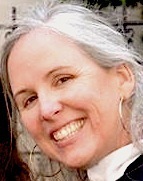 What is your ideal time and place to read?
What is your ideal time and place to read?
I go to bed an hour or two before I’m sleepy to read in bed. It’s the ultimate luxury. I also love to read with my students. Community silent reading is lovely.
Which books have had the biggest influence on your writing?
Living a Literary Life by Carolyn See has been important since I first read it fifteen years ago. It gave me permission to have a blast with giving writing a real go. It’s full of practical advice and pieces of memoir and whimsy. So great.
I consider Raymond Carver my literary godfather. There was a moment in my early twenties when I was a young bride, reading Carver for the first time, stretched out on the dirty carpet of our converted garage studio apartment in Arcata. I rolled onto my back after reading “Cathedral”, just astonished and changed and totally infatuated. I’d never be that good, but I wanted more than anything to play too. I still feel that way.
How do you balance reading and writing in your life?
It’s more shocking to me that I balance life in my reading and writing. How does my house get clean? My papers graded? My students taught? My family fed? My grad schoolwork completed?
I think it must be the work of magic.
Choose your preferred book form: ebook, physical book, or audio book?
My mom gave me a Kindle one Christmas, and I like it for books I otherwise wouldn’t be able to access easily. There are independent publishers coming out with interesting and well-written work and my Kindle lets me get at those without any fuss.
Yet, I’d prefer they were available at my local indie bookstores because there is nothing like the feel and smell of a real book. Sacramento has an embarrassment of riches in independent bookstores. We have Beers Books, Underground Books, and Time Tested Books. Wonderful, thoughtful bookstores are such a rare treasure now.
Do you consciously plan your future reading–i.e., set book goals, keep a TBR list, participate in book challenges or book clubs? Why or why not?
Right now I am determined to read through my own bookshelf—real and virtual. I have stacks of titles on my shelves and Kindle that I haven’t read yet that are winking at me right now as I sit here. Read me, they say. Do you hear them? They are very insistent.
What are you reading now?
We by Michael Landweber. It’s published by Coffeetown Press, an independent imprint I admire. I’m excited by the integrity of a lot of the work coming out from independent publishers right now. It’s an interesting time to be a reader and writer.
I’m also reading When My Heart Was Wicked by my writing group colleague Tricia Stirling. I was privy to some early pages of this novel, and I’m so happy to see it coming out with Scholastic next year. Again, authentic voice is my thing.
For nonfiction, I have Lean In by Sheryl Sandburg going. It’s eye-opening and I’m enjoying it. I’m rereading passages of Paint it Black by Janet Fitch, The Road by Cormac McCarthy and Rule of the Bone by Russell Banks for the kind of perverse comfort harsh stories give me. In my reading, I always have loved the terrible, beautiful real.
You can find out more about Maureen on her website or Twitter.
 Tags: Annie Proulx, Beers Books, California, Carolyn See, Coffeetown Press, Cormac McCarthy, Francesca Lia Block, Giant Squid Books, How to Be Manly, Janet Fitch, Jodi Angel, Judy Blume, Kindle, Lean In, Little Mermaid, Living a Literary Life, Margaret Atwood, Maureen O'Leary Wanket, Michael Landweber, Paint It Black, Raymond Carver, Rule of the Bone, Sacramento, Sheryl Sandburg, The Language of Flowers, Time Tested Books, Toni Morrison, Tricia Stirling, UC Santa Cruz, Underground Books, Vanessa Diffenbaugh, Virginia Lee Burton
Tags: Annie Proulx, Beers Books, California, Carolyn See, Coffeetown Press, Cormac McCarthy, Francesca Lia Block, Giant Squid Books, How to Be Manly, Janet Fitch, Jodi Angel, Judy Blume, Kindle, Lean In, Little Mermaid, Living a Literary Life, Margaret Atwood, Maureen O'Leary Wanket, Michael Landweber, Paint It Black, Raymond Carver, Rule of the Bone, Sacramento, Sheryl Sandburg, The Language of Flowers, Time Tested Books, Toni Morrison, Tricia Stirling, UC Santa Cruz, Underground Books, Vanessa Diffenbaugh, Virginia Lee BurtonDel.icio.us


TweetThis

Digg

StumbleUpon

Comments: 0 (Zero), Be the first to leave a reply!You might be interested in this:
 Romance Heroines We Love
Romance Heroines We Love Writers Who Read: Désireé Zamorano
Writers Who Read: Désireé Zamorano Writing & Parenting
Writing & Parenting What Good Books Do
What Good Books Do How Do You Choose What to Read?Copyright © G. G. Andrew [Writers Who Read: Maureen O'Leary Wanket], All Right Reserved. 2014.
How Do You Choose What to Read?Copyright © G. G. Andrew [Writers Who Read: Maureen O'Leary Wanket], All Right Reserved. 2014.
